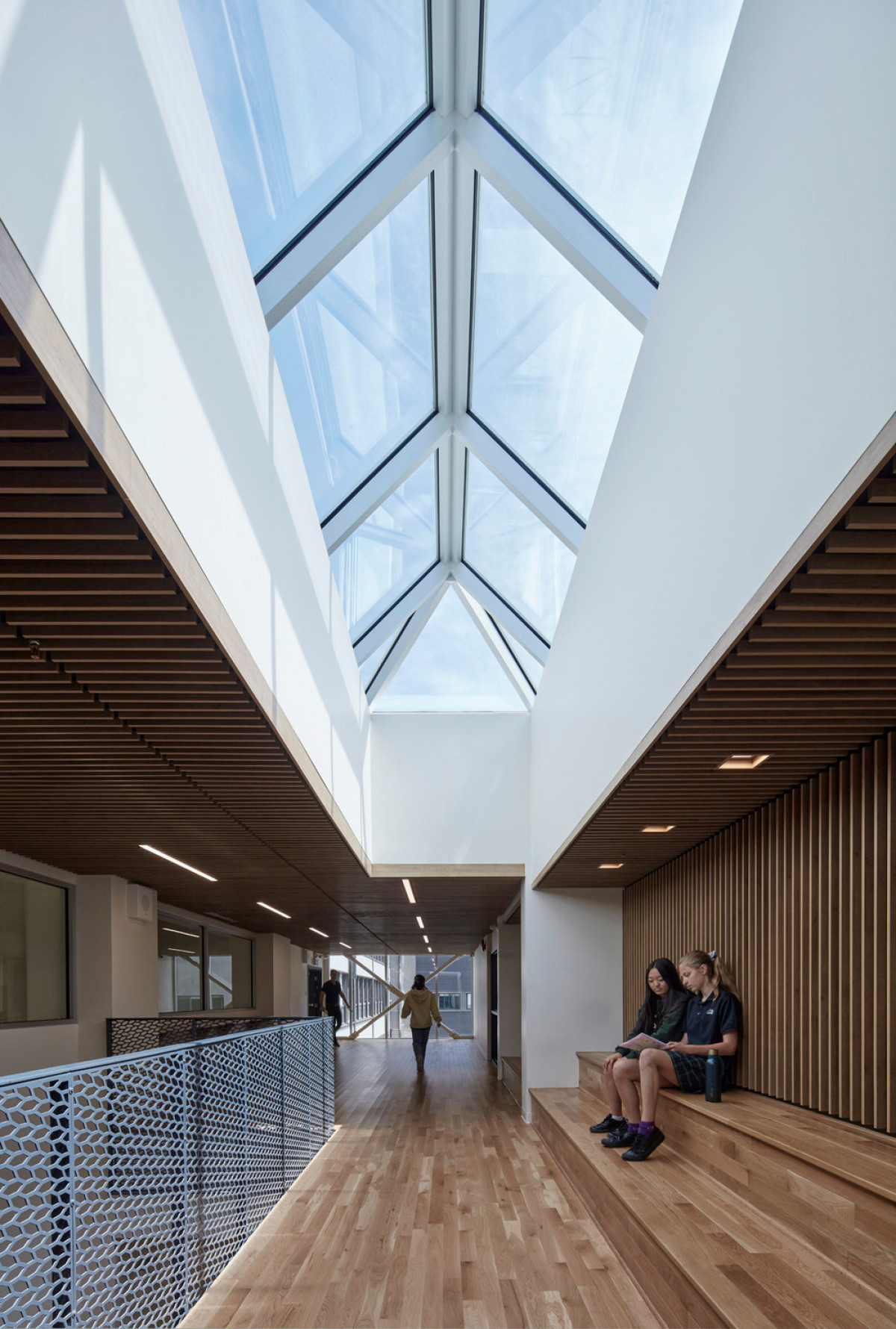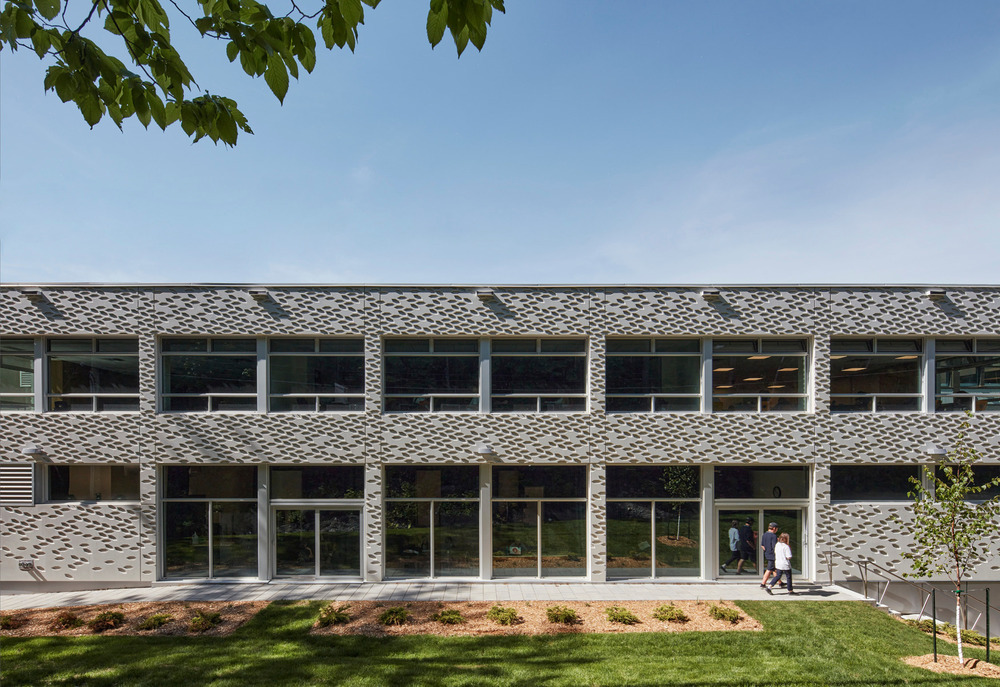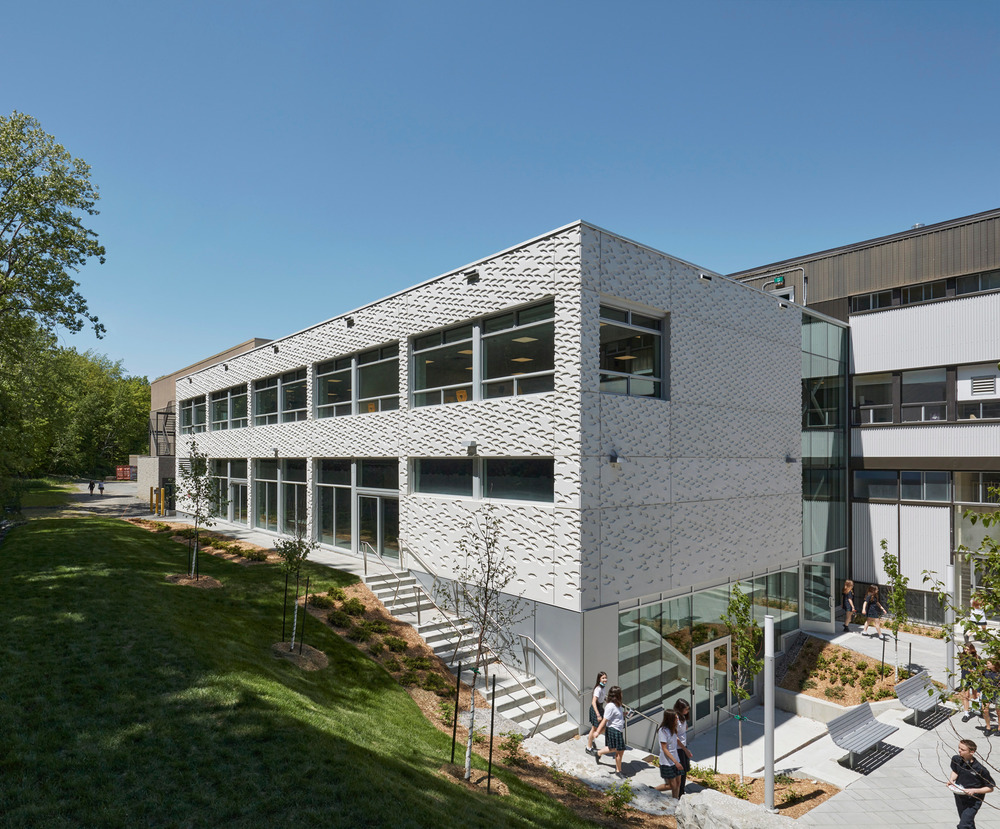24 Aug 2022

The history of Mont-Saint-Hilaire, in southern Quebec, is closely tied to the mountain and the river which the settling community followed. On its north side, the Collège Saint-Hilaire academic institution is anchored. Founded in 1964, the mixed private college is graced by exceptional surroundings, providing an environment conducive to learning and development for its young students.
Also Read | Visioarq wins Architizer 2022 Architecture + Wood
Since its creation, the original school has been renovated several times, but without fully capitalizing on its strategic location at the base of the mountain. Characteristic of 1960s architecture, with the prevalence of horizontality and boxed windows as its architectural intent, the original building directs its views towards the river, the surrounding fields, and the city. In a desire to respect the architectural language of the school, the extension takes up the linearity, while integrating harmoniously into its context, and simultaneously modernizes the rather traditional layout of the learning spaces, classrooms, and circulation areas.
Also Read: Easy Guide To Choose A Color Palette For Your Space

Endeavouring to respond to the programmatic and spatial needs of the school, the KANVA team first visited the site to define the project requirements. The use of workshops for discussion and mediation as an architectural tool is a method privileged by the firm. Encouraging understanding and inclusiveness offers the opportunity for future occupants to be part of the process, but also for the architects to intimately grasp the client's needs while immersing themselves in the atmosphere of the site. This technique suggests a more sensitive reading of the mandate, instilling a strong identity into the project that reflects its users. The main elements of the architectural program are thus defined: additional classrooms, student rooms, and multifunctional spaces for artistic and performance activities.
Also Read | Visioarq wins Architizer 2022 Architecture + Wood
Inspired by the surrounding natural context, as well as the College's values of fraternity and collaboration, the Tree appears as a tool symbolizing the project's multiple connections, a strong image serving as a reference point for the architectural concept. As the protagonist of the forest, its intrinsic presence in its environment evokes the plurality of links it creates. From its branches arise multiple possibilities, all developed around the needs and conditions inherent to the site. It represents connectivity, from the roots to the crown, having student development at its core on three distinct scales:
The extension is therefore articulated as a communicating vessel and a receiving space between the built environment and its natural past. It becomes a pause between the existing and the new, like an inhabited in-between. This widely fenestrated interstice ensures that the vertical and horizontal circulation spaces are constantly connected to the outside. The luminous and organic layout, designed in layers and based on a balance between opacity and clarity, transparency and openness, offers users a human-scale environment.
Also Read | 4 ways to style your interior spaces with copper
This new space encourages socialization by teaching students to live with others in a pluralist society. The place facilitates the sometimes delicate transition from childhood to adulthood. By allowing them to develop their maturity and acquire effective working methods, they have the opportunity to become committed citizens who are aware of the environment. This embodies the vision of the institution: Learning is in my nature.
Also Read | Arabic Resin art decor launches by Artist Madhavi Adalja
The concepts of connectivity and the Tree are also deployed through materiality. In addition to the extensive use of wood, the forest is represented on the exterior skin by a graphic expression that evokes the texture of the foliage. This oblique and suggestive pattern brings forward a varying play of density to animate the facades. This rhythmic design, through its proportions, height, and horizontality, is in direct dialogue with the original building. Through this relationship with the environment, the extension gives form to the concept of connectivity and encourages the transition from pedagogical and educational learning to life experiences.
Also Read | Kareena Kapoor Khan’s new home in Bandra with European styled decor & wooden detailing

The outdoor courtyard is adjacent to the mountain acts as a further articulation of the link between nature and the built environment. This communal space, valued and protected, acts as a sanctuary to meet, in groups or with oneself. By showcasing the site, this architectural proposal offers a sequence of rich moments, allowing for a real human connection, with an emphasis on the flourishing nature that surrounds it.
Also Read | Interior stylist Bhawana Bhatnagar on smart lockers at residential spaces
Technical sheet
The team of collaborators